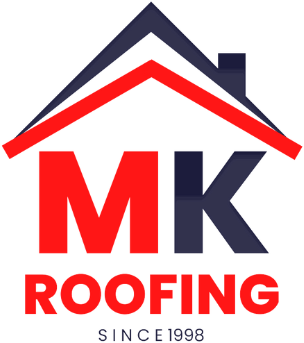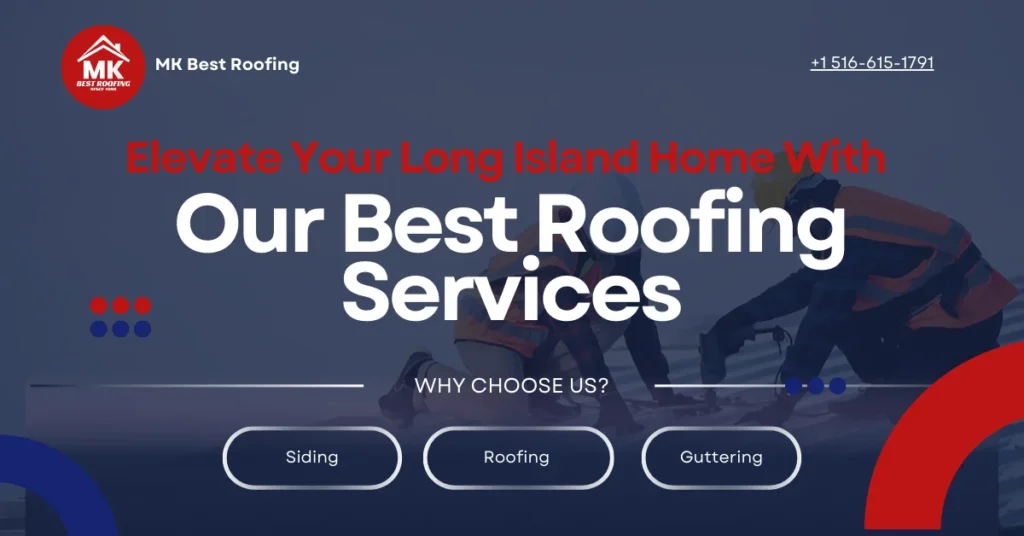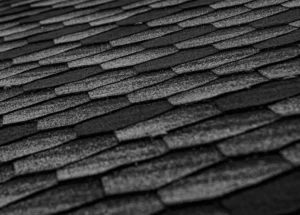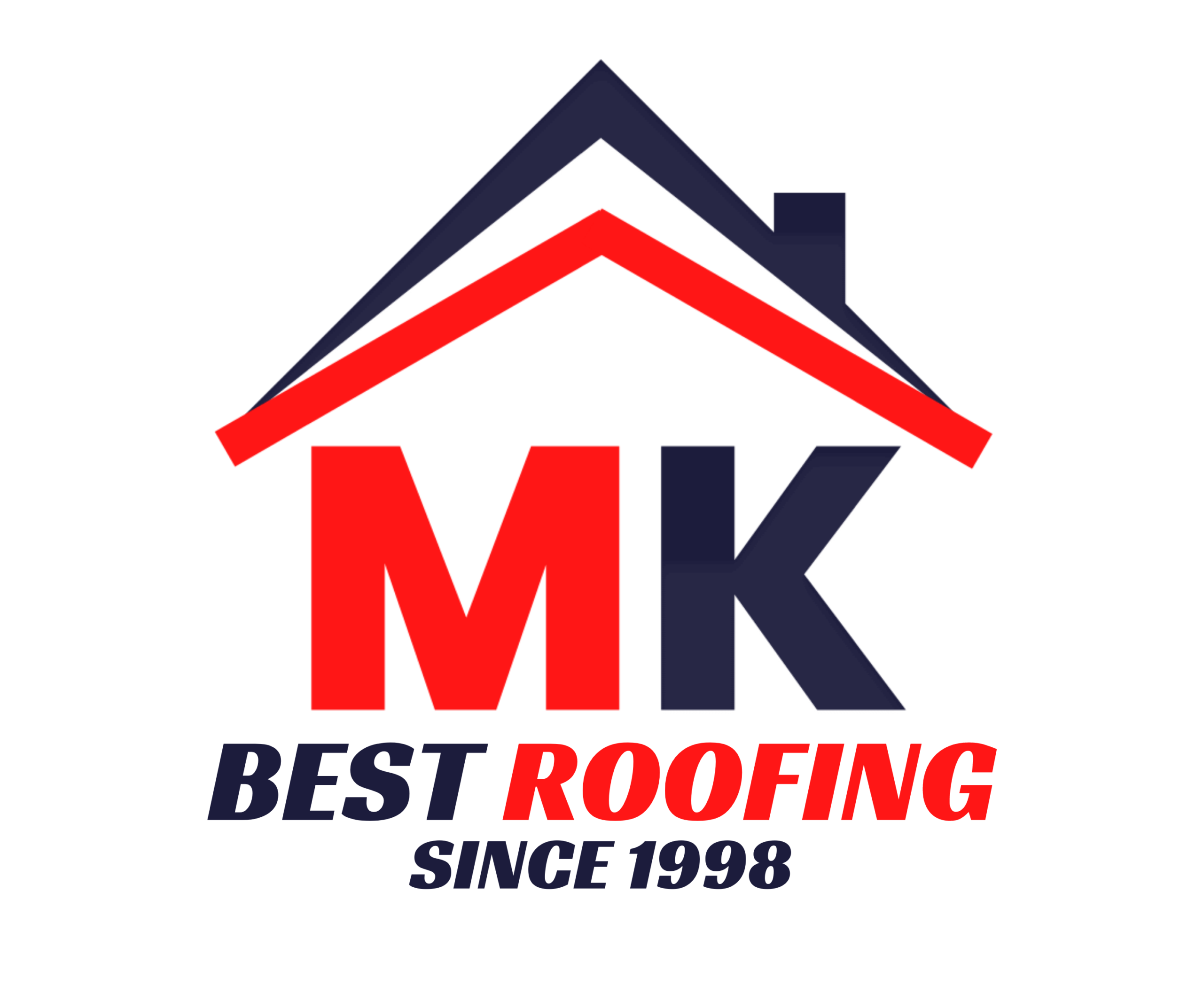Do you find some areas of your roof missing shingles or are there granules present in the gutters? Well, these alarming signs call for a roof repair! It is crucial to repair the roof to enhance the integrity of your home and avoid costly damages that may arise from water ingress. Roofs over 20 years old may have very little or no coverage, hence there is a need to fix them as early as possible. This blog will cover everything you need to know about roof repairs, including the most common roof problems, how to fix them on your own, and the cost considerations. By the end of this, you will be able to understand the steps that need to be taken in order to ensure that your roof is in good condition and how you can prevent and minimize the risks to your home.
Types of Roof Damage That Can Be Repaired
It is important to know the types of damage that a roof can incur so you can repair them as soon as possible. Some of the most common roof damage that can be fixed include;
- Damaged or Missing Shingles: Shingles can develop a crack, curl or get destroyed by storms or strong winds and this exposes your roof to developing leaks.
- Leaks and Water Damage: Leaks can occur as a result of damaged flashing, cracks or worn out materials and this will lead to water marks or even mold growth.
- Sagging Roof Deck: If you find some parts of the roof are sagging, it may suggest that there is some structural issue or water is stuck inside the roof which will weaken the roof structure.
- Clogged or Damaged Gutters: If the gutters are damaged or clogged then it hampers the water flow which in turn leads to water damage on the roof as well as the foundation. ·
- Damaged Flashing: Chimney, vents and skylights flashing may develop cracks or get separated from the roof thereby allowing water to penetrate through.
- Cracked or Missing Roof Vents: If the vents are damaged it may lead to development of leaks or improper ventilation in the attic which in turn results in moisture build up and mold growth.
- Wear and Tear on Roof Sealant: The sealant around flashing, vents or chimneys may wear out over time and if not well maintained may develop cracks which will lead to leaks.
- Sun Damage: Shingles may develop cracks, warping or even start to lose granules as a result of exposure to sun rays over a long period.
- Ice Dams: Ice Dams are common in the colder regions. They are likely to form when the melted snow freezes at the edge of the roof hence causing water to seep into the house.
Cost of Repairing Different Types of Roofs
The cost of roof repair will differ due to various factors. The cost depends upon the kind of material used, for example, asphalt roofs are usually cheaper than metal and tiled ones.
In New York, the average repair costs for various roofing materials are as follows:
| Roof Type | Repair Cost Range (per square foot) |
| Flat Roof | $4 to $10 |
| Asphalt Shingles | $3.50 to $9.50 |
| TPO Roofing | $6 to $9 |
| Rubber Roofing (EPDM) | $5 to $8 |
| Metal Roofing | $8 to $12 |
| Camper/RV Roofs | $4 to $10 per sq. ft. |
In addition to the roofing materials, the type of damage that has to be repaired will also influence pricing; for instance, fixing loose or missing shingles will be cheaper than extensive water damage that needs to be fixed within the roof’s structure. Moreover, depending on the area of the roof and what needs to be done, labor charges also play a part. It makes sense that complex repairs will take longer and therefore be more expensive.
Repair Techniques for Specific Roof Types
Repair techniques differ depending on the type of roof and materials. Here’s a simplified guide:
Flat Roof
Flat roofs are prone to leaks. The only option here is to patch the leak and then remove the blisters. Start by cleaning down the roof with water. For small holes or cracks, it is advisable to use roofing cement on the areas. Then on the blisters, it is recommended to cut them open to release moisture and then apply cement underneath before resealing them. If the leak is bigger, patches can be placed on top of the cement made out of the same material which are then secured using roofing cement. Regular inspections are recommended to check for catching the damage early.
Shingle Roof
If you have a damaged or missing shingle on your roof, it is best to replace them. First, inspect the area where the issue is located. Check for any curled or cracked shingle as loose shingles can be easily re-glued using roofing cement. If it is a broken shingle you need to replace, lift the surrounding shingles, discard the broken one, and secure the new shingle in place with nails and glue. Proper sealing is needed to prevent leaks.
TPO Roof
TPO rooftop repair is a bit more complex as it requires special methods. Using TPO specific fabric, small tears can be patched with heat or glue. Just like small tears, larger problems also have a solution, which involves cleaning the area then placing a large patch over the damaged area extending further than the problem, and securing the area by heat welding or glue. When performing repairs always refer to the manufacturer’s guidelines to ensure proper watertight repairs.
Camper Roofs
Camper roof is a kind of recreational vehicle (RV) roof. The seams on the camper roof or the vents are the most vulnerable parts that need repair. To fix issues with camper roofs, one must clean the affected area and apply RV patch or sealants over it. When dealing with rubber roofs, silicone sealant works great on seams. If there is more damage, then you need to replace sections of the roof membrane.
Rubber Roof
EPDM rubber roofs are quite easy to repair. The repair process starts by isolating the leakage area then cleaning and drying it, after which rubber adhesive or sealant are applied. Embedding fleece patches is a good way to give additional strength. This guarantees a long lasting and waterproof fix.
Metal Roof
Metal roofs are of low maintenance and they seldom require repair. In case they do need some care, you can easily seal the metal seams or treat the rust at the joints. When fixing small holes, one can patch metal flashing with screws and sealant. Also, make sure to check for rusted spots. They need to be cleaned first and then painted over with sealant or a rust primer.
DIY Roof Repair Tips
To perform DIY roof repair effectively and safely, appropriate techniques and safety measures are required. Here are some tips to help you solve the most common problems:
- Safety First: ensure the safety of the worker by using a strong ladder, anti-slip shoes and a belt. In case of a mishap, it is always advisable to work with a partner.
- Inspect and Clean: Assess the roof for any form of damage that may have occurred as well as the debris that may be on the roof. To examine the roof in detail, use binoculars and to clean the roof, use a roof rake and a broom.
- Repair Curled/Cracked Shingles: To fix curling shingles, apply roofing cement and keep them down with a weight. To fix cracked shingles, inject cement into them or replace the unstable shingles.
- Replace Missing Shingles: Remove damaged shingles, clean the surface and fasten a new one with nails and roofing cement.
- Repair Flashing: To fix the gaps in flashing, use silicone caulk or adhesive membranes. If the flashing has come off then apply a new caulk.
- Check for Leaks: Watch out for the signs of leakage or water stains in the attic after the repair work is over.
- Temporary Measures: Lay down tarps if the roof damage cannot be repaired immediately due to lack of labor or unfavorable weather conditions.
Longevity of Roof Repairs
The lifespan of a roof repair greatly depends on its maintenance practices, the materials employed and its environment. Shingle roofs have an average lifespan of about 15 to 25 years, while metal roofing can last anywhere from 30 to 50 years. Clay or cement tiles can last for a staggering 50 to 100 years, while individual tiles will require special maintenance and replacement. Wooden shakes are capable of withstanding the test of time for 30 to 50 years, as long as they are well taken care of. Slate rooftops are popularly known for their durability and can last an astonishing amount of time, about 50 to 150 years. Lastly, Rubber roofing, when properly maintained, can last between 40 to 50 years.
Factors Affecting Repair Durability
The following factors listed below are responsible for affecting roof repair durability:
- Material Quality: The quality of the materials used on the roof has a direct effect on the durability of the repairs that are made. Higher quality materials are more likely to withstand the harsh weather elements and will last longer.
- Installation Quality: Proper installation is very important to make sure that the repairs are strong and will last. Even if you use high-grade materials but don’t use the right installation techniques, then it may lead to premature failure.
- Weather Conditions: Some of the factors that can affect roof repairs include temperature changes, amount of rainfall, snow or hail. Certain weather conditions may cause frequent development of roof faults and weaknesses hence require more frequent inspections. Maintenance Practices: These include checking, cleaning, and maintaining the roof regularly to increase the lifespan of roof repairs. Damage or wear should be dealt with as early as possible by a homeowner.
- Ventilation and Insulation: Appropriate installation of attic vents and insulations keeps moisture away hence preventing the roof materials from getting ruined easily.
Roof Repair Regulations
New York City requires permits for major changes to roofs, structural adjustments such as changing large sections of the roof area, putting dormers, and installations of new roofing require a permit. Alterations to the type of roofing material used, such as replacing metal roof with shingles, are also required to have approval before the alteration.
On the other hand minor alterations such as fixing and replacing a few shingles or the roof membrane will not require a permit to be implemented unless structural changes are needed. Contact a professional or local regulators for assistance in order to refrain from being fined, but don’t forget to ensure you have permits ready during the inspection to comply with the building requirements.
Conclusion
To wrap up, a successful roof repair depends on the proper assessment of the problem, the understanding of what can be done by the owner and when it is advisable to seek for a professional’s help. This way, addressing small issues early will help one avoid costly and complicated repairs in the future and will also extend the roof’s lifespan.
It is important to note that while the cost is a factor to consider, it is also important to ensure that you are not compromising on the roofing materials and they are well installed to avoid frequent repair. Your roof is an important part of your home and one of the most valuable investments you have made to protect your home and thus you have to make the right decision.
FAQs
Can I repair my roof myself?
Although some homeowners might be able to fix a few minor roofing problems, it is recommended to hire professional help rather than repair roofs themselves. If proper roof repair is not performed, it could lead to a bigger mess in the future, especially for complex cases. On the other hand, professionals come equipped with the right tools and have the training necessary to perform such work without any risks.
What are the most common causes of roof damage?
Extreme weather conditions such as heavy rain, strong winds, hailstorms and even snow are a few of many reasons that can damage the roof. Improper installation or insufficient maintenance can also cause roofing problems. Regular inspection toward spotting potential damage early provides the ability to replace the roof without paying too much.
How long does a roof repair take?
The severity of damage and the size of your roof plays a crucial role in determining the time required for the repairs. For simple roof repairs, it could range around a few hours and bigger ones could take multiple days. Additional factors such as the type of roofing material, type of roof, and weather can affect the time period as well.
Will my insurance cover roof repairs?
In most cases, repairs made to the roof are covered under homeowners’ insurance, especially if they are caused by storms, fires or even accidents. On the flip side, any and all damage caused by neglect or regular wear and tear is mostly not covered. It’s a good idea to talk to the insurance provider to get clarification about your situation.







